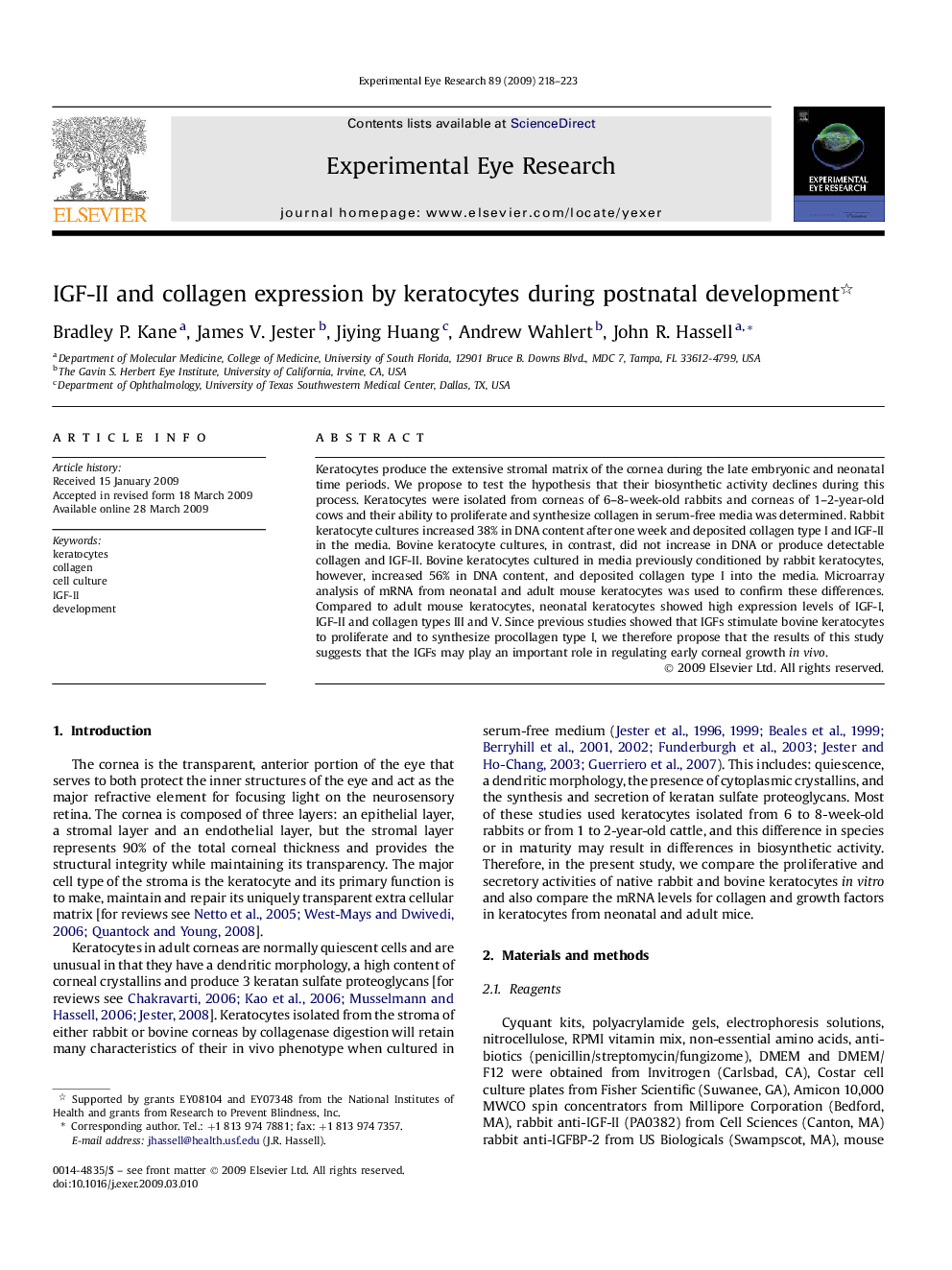| Article ID | Journal | Published Year | Pages | File Type |
|---|---|---|---|---|
| 4011930 | Experimental Eye Research | 2009 | 6 Pages |
Abstract
Keratocytes produce the extensive stromal matrix of the cornea during the late embryonic and neonatal time periods. We propose to test the hypothesis that their biosynthetic activity declines during this process. Keratocytes were isolated from corneas of 6-8-week-old rabbits and corneas of 1-2-year-old cows and their ability to proliferate and synthesize collagen in serum-free media was determined. Rabbit keratocyte cultures increased 38% in DNA content after one week and deposited collagen type I and IGF-II in the media. Bovine keratocyte cultures, in contrast, did not increase in DNA or produce detectable collagen and IGF-II. Bovine keratocytes cultured in media previously conditioned by rabbit keratocytes, however, increased 56% in DNA content, and deposited collagen type I into the media. Microarray analysis of mRNA from neonatal and adult mouse keratocytes was used to confirm these differences. Compared to adult mouse keratocytes, neonatal keratocytes showed high expression levels of IGF-I, IGF-II and collagen types III and V. Since previous studies showed that IGFs stimulate bovine keratocytes to proliferate and to synthesize procollagen type I, we therefore propose that the results of this study suggests that the IGFs may play an important role in regulating early corneal growth in vivo.
Related Topics
Life Sciences
Immunology and Microbiology
Immunology and Microbiology (General)
Authors
Bradley P. Kane, James V. Jester, Jiying Huang, Andrew Wahlert, John R. Hassell,
